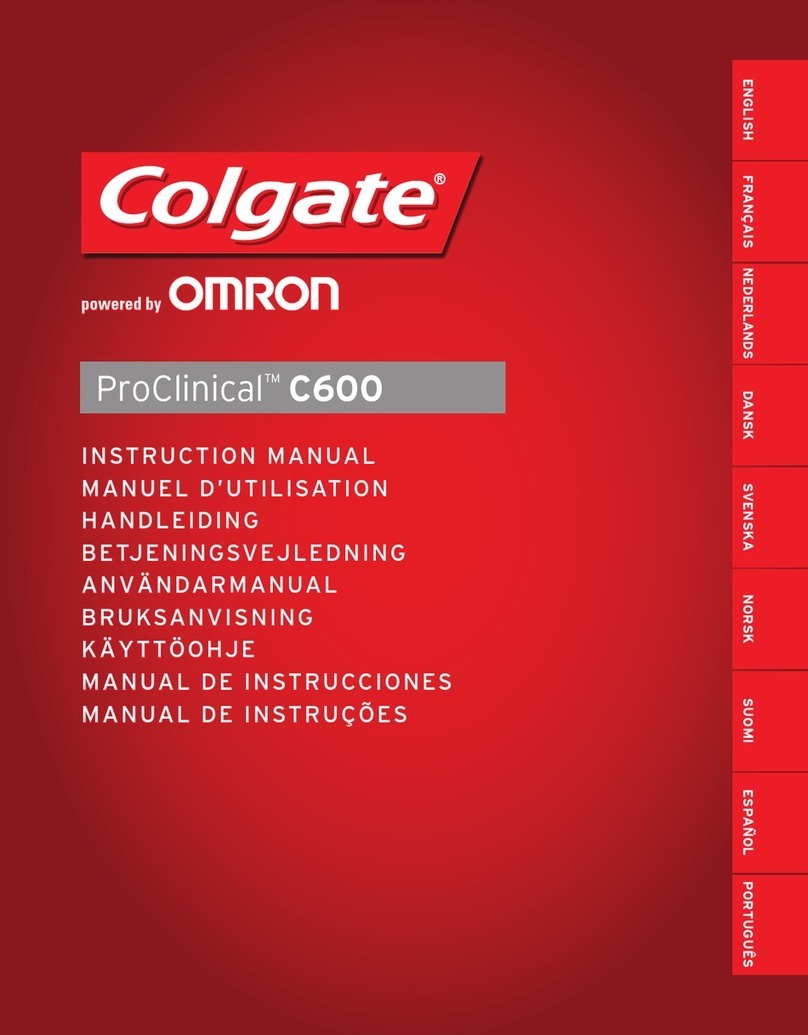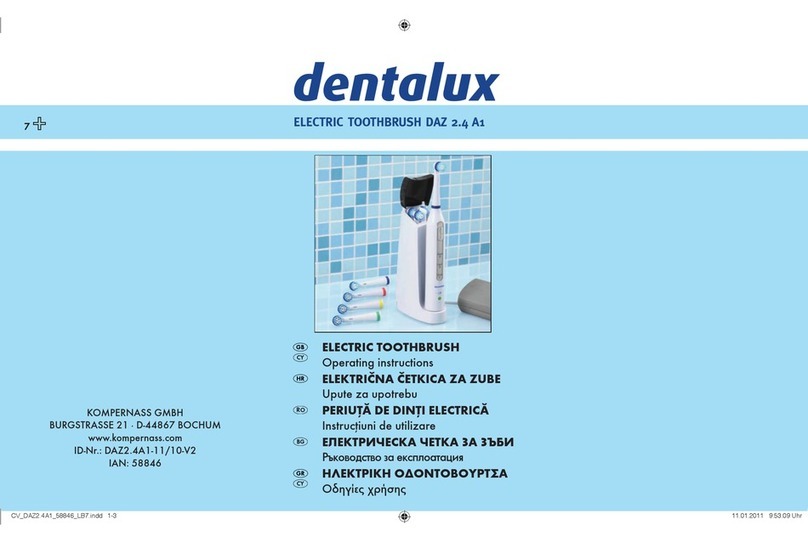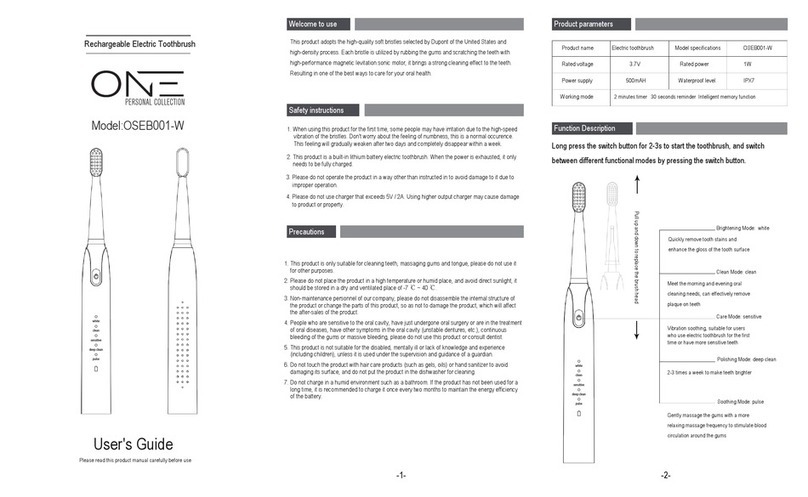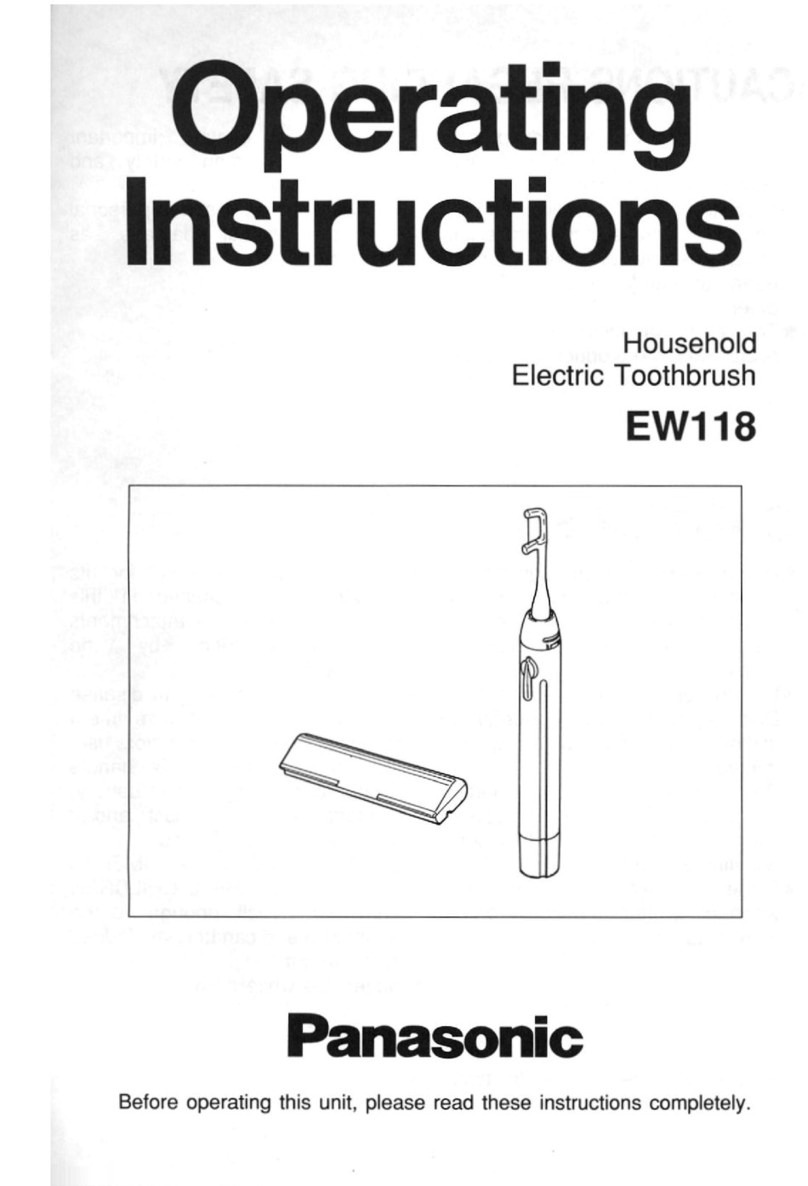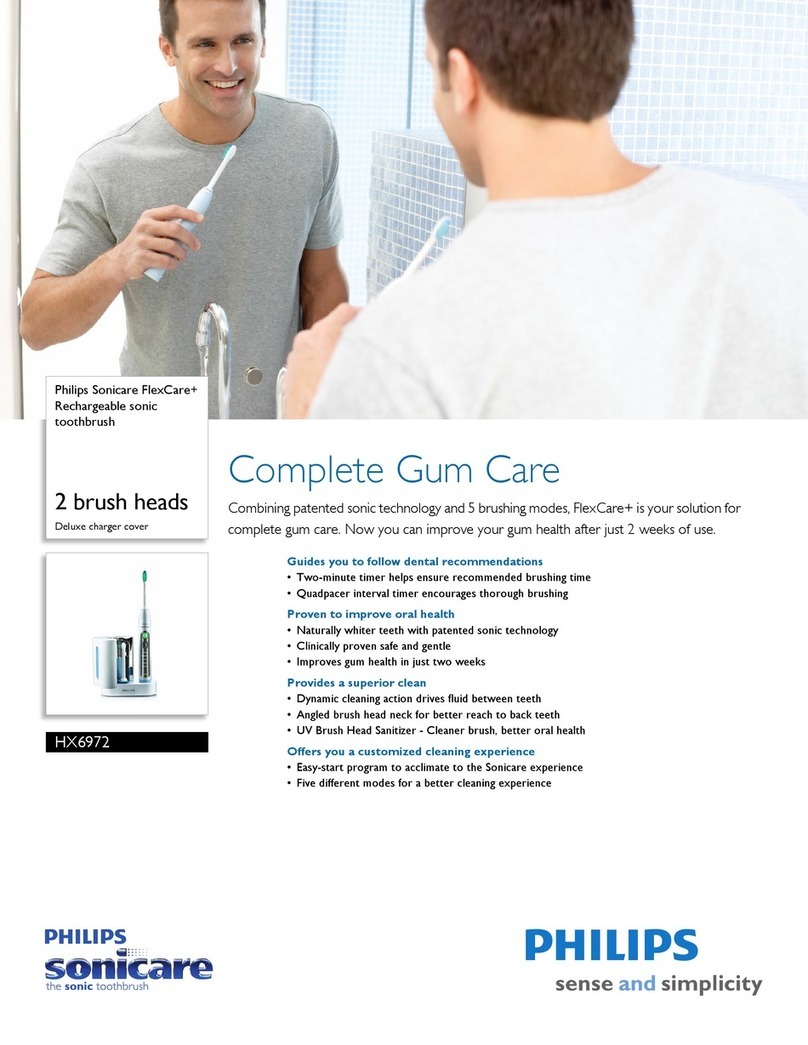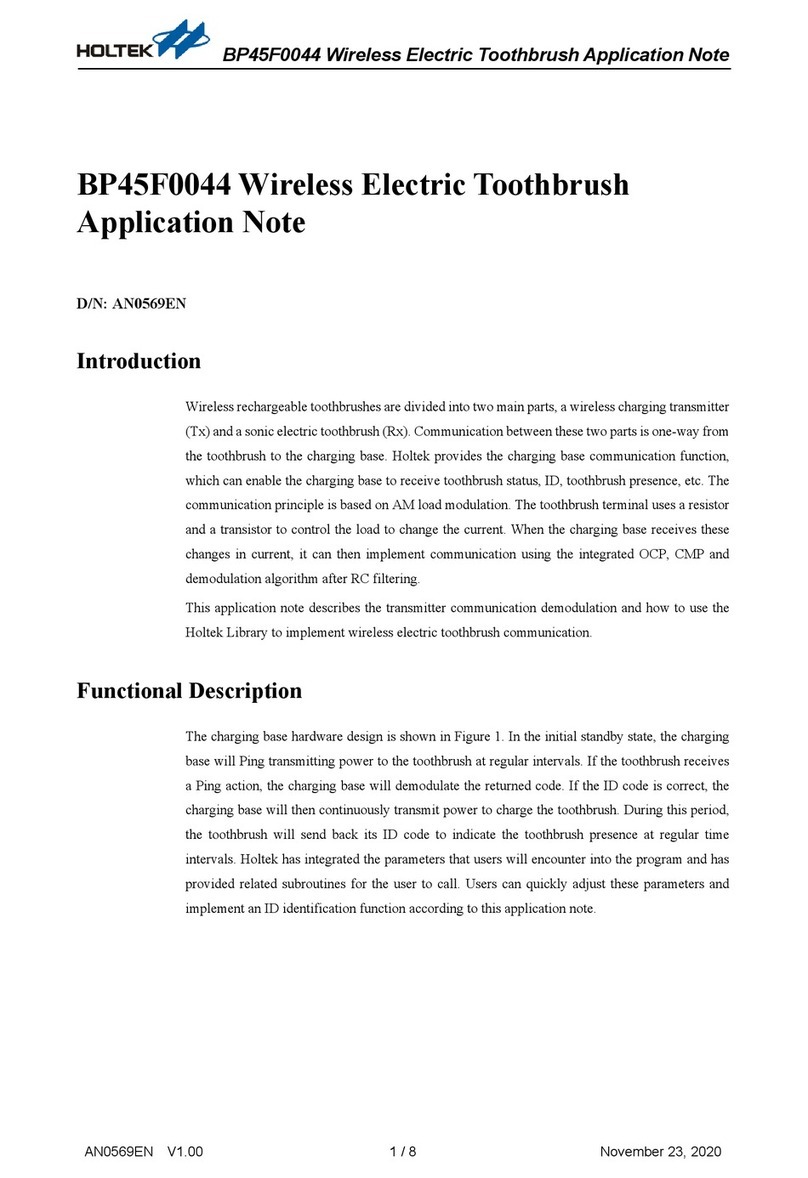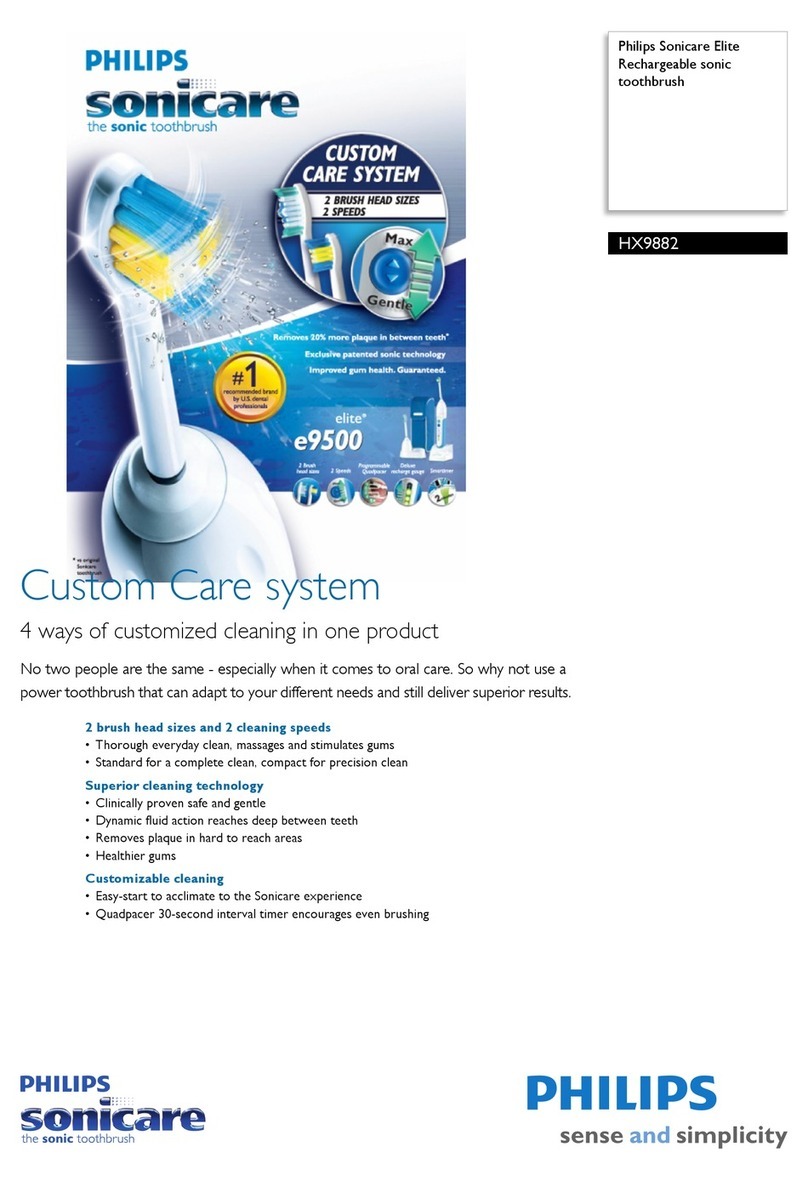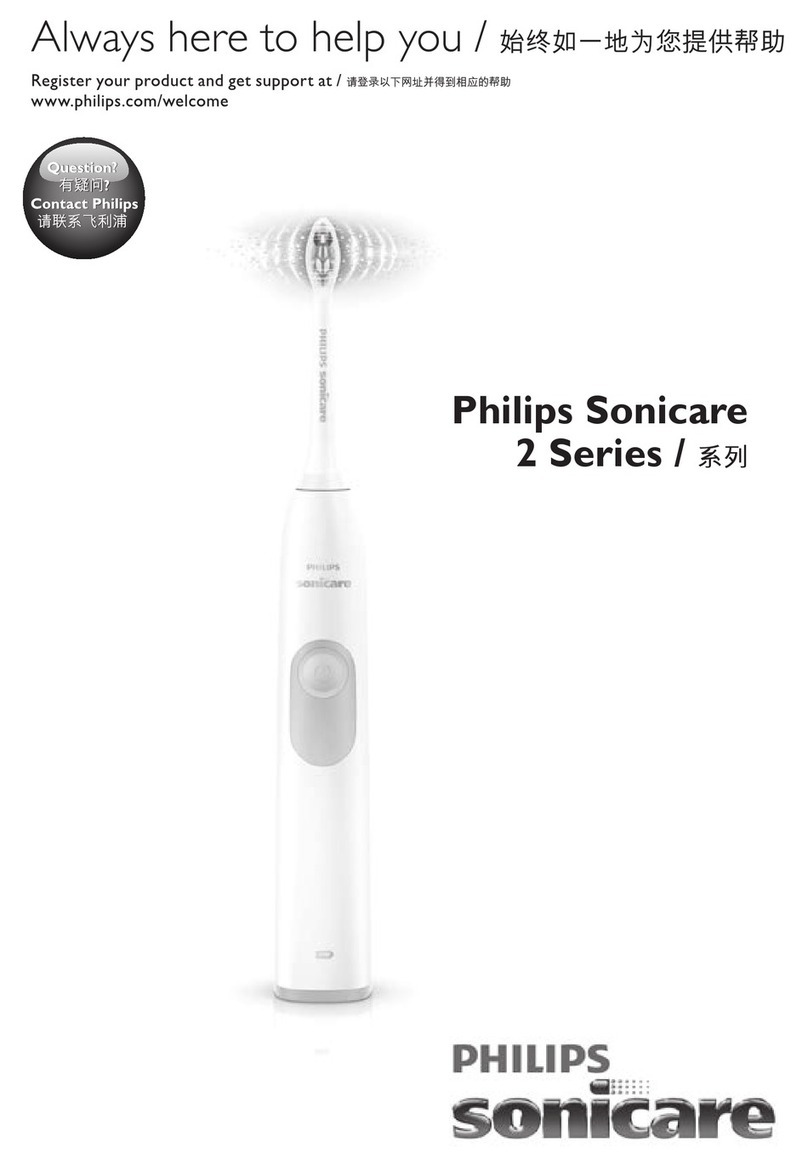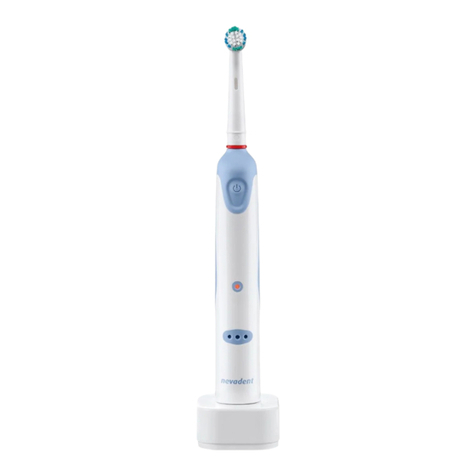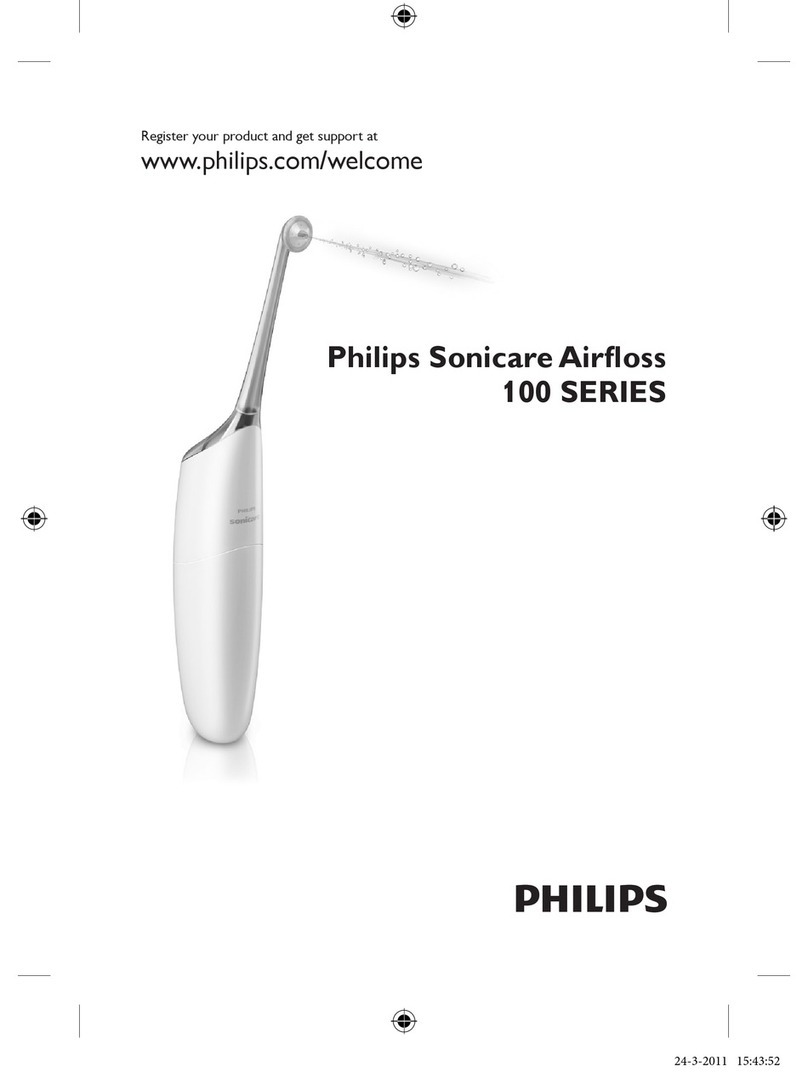
Wireless Charging Sonic Electric Toothbrushes
WAS-1972EN V1.00 4 / 17 December 27, 2021
Charging Base
The charging base is powered by a 5V USB interface. LC resonance is implemented using a PWM
function to control the internal MOS transistors. An internal demodulation circuit together with an
external current-sampling resistor can implement communication demodulation. The ID returned by
the toothbrush body is used to determine whether the charging base is powered on.
Toothbrush Body
The toothbrush body is mainly used to drive the sonic motor and to receive charging energy and
communication data from the charging base.
The sonic motor driver uses an integrated H-bridge drive circuit to control the sonic motor for
continuous backward or forward rotation control. The swing amplitude and force of the brush head
can be controlled by adjusting the pulse width when the motor rotates backward or forward. The
swing amplitude can be controlled by adjusting the pulse frequency.
The toothbrush body is powered by an LC resonance circuit which is supplied to the MCU through a
regulator circuit. The internal linear charging circuit is used for 3.7 V lithium battery trickle, constant
current and constant voltage charging control. The charging current varies according to the user design.
During the charging process, the toothbrush body will communicate with charging base, which will
obtain the toothbrush body ID. According to different toothbrush body setup operations, the sonic
motor is controlled to swing forwards and backwards with a corresponding amplitude and frequency
to achieve different cleaning effects. Each mode is described below.
Charging mode
The toothbrush body will enter the charging mode when it has been placed on the charging base.
When charging, the battery voltage of the toothbrush body will be less than 3.3V and the red
LED indicator will be on. When the battery voltage is greater than 3.3V but less than 3.8V, the
yellow LED indicator will be on. When the battery voltage is greater than 3.8V, the blue LED
indicator will be on and which will have a breathing illumination effect.
Operating modes
The toothbrush body has 4 different operating modes, which can be cyclically switched by a
button switch. In operating mode 0, which is the Sleep mode, the motor and LEDs will turn off.
Operating modes 1, 2 and 3 are used to implement different cleaning effects. Here three white
LEDs indicate the current operating mode.
Solution Design Description
This solution is composed of a charging base and a toothbrush body. The charging base uses the
BP45F0044 as a master MCU and provides 0.5K of Flash Program Memory, 4 bidirectional I/Os,
a high voltage NMOS, a programmable PWM circuit and a demodulation circuit. The toothbrush
body uses the BP45F1330 as a master MCU and provides 2 K of Flash Program Memory, 14
bidirectional I/Os and an H-bridge drive circuit.
